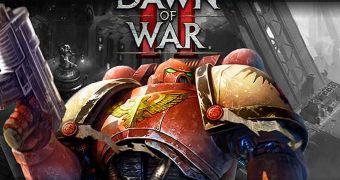Dawn of War II, the real time strategy from Relic that has just been released, has generated a lot of discussions. Most outlets gave the game high marks and “buy it” recommendations while, following the reviews, directing some pretty tough criticism towards the game experience. Some of that criticism strikes me as odd, so I'm going to tackle three common comments about Dawn of War II that I consider to be wrong.
1) The single player campaign is repetitive because most of the game maps are re-used several times in the game. Yes, maps are used and re-used. No, it is not boring. First of all, the single player maps are saddled with two structures from the three strategic types the game has: communications arrays, foundries and shrines to the Emperor. They offer strategic advantages to the player and tactical powers but you can only capture one during one mission. So, going through a map twice is needed to get the most out of these structures. It's true that if you play on the lower two difficulty levels, they don't matter much but on Primarch, it is important to have them around. Bear in mind that getting the same map to play but with a different type of mission, like search and destroy instead of just taking out an enemy boss, changes the tactical approach. And there are also defense missions, where the lay of the map is less important, as all you need to do is weather four waves of enemies as they try to take out three of your structures.
2) The story telling in the game is limited and wooden. Hey, these are Space Marines from the Warhammer 40,000 universe. The whole setup makes them superhuman, powerful, tough, old, keepers of powerful secrets and the last line of defense against all the manners of Xenos. Should anyone expect them to have the emotional range of Sean Penn? No. The fact that Relic managed to take out pure cut scenes and deliver narrative and back story through the pre missions meta game is a huge step forward (the actual beginning of tactical missions are also revealing as to the personalities of the various squads). And the developers managed to get their characters a lot of personality by just allowing you to play around with their attributes and load out.
3) Taking out base building removes one necessary layer of real time strategy. I suppose in some ways it's weird to call Dawn of War II a RTS. Certainly, we should talk more about the genres and how we need to pigeonhole all releases into a few narrow categories. But if taking out base building does something, then is allowing players to concentrate on applying the choices they made in the development of squads and in the load out on the battlefield in the real meat of all strategy, taking out the enemy and achieving goals. I can still play and enjoy games featuring base building (hey, I still have Soulstorm installed) but the approach of Dawn of War II (and World in Conflict before it) makes a lot of sense.

 14 DAY TRIAL //
14 DAY TRIAL //